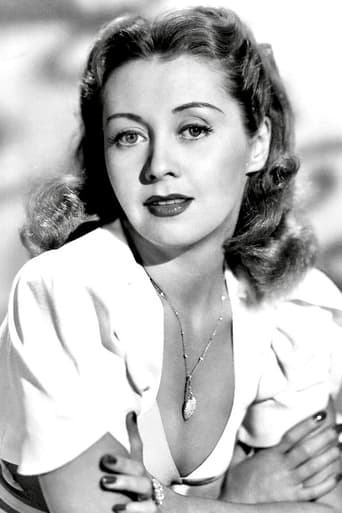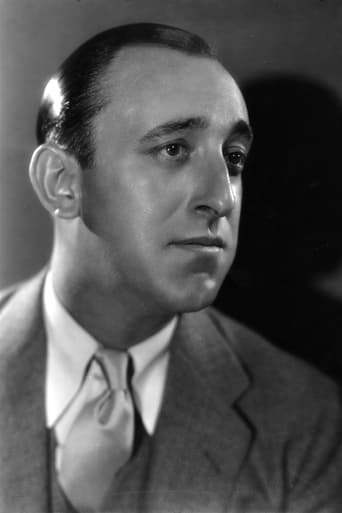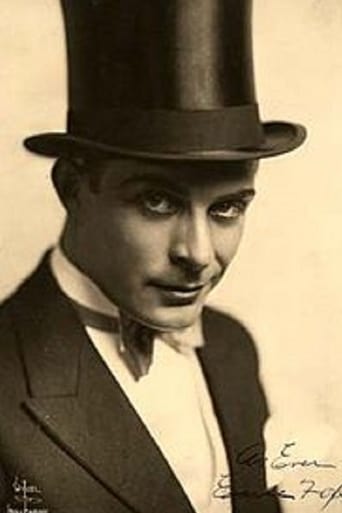VividSimon
Simply Perfect
Bob
This is one of the best movies I’ve seen in a very long time. You have to go and see this on the big screen.
Billy Ollie
Through painfully honest and emotional moments, the movie becomes irresistibly relatable
Caryl
It is a whirlwind of delight --- attractive actors, stunning couture, spectacular sets and outrageous parties. It's a feast for the eyes. But what really makes this dramedy work is the acting.
JohnHowardReid
Joan Blondell (Blondie Johnson), Chester Morris (Danny), Allen Jenkins (Louis), Earle Foxe (Scannel), Claire Dodd (Gladys), Mae Busch (Mae), Joseph Cawthorn (Lord), Olin Howland (Eddie), Sterling Holloway (Red), Toshia Mori (Lulu), Arthur Vinton (Max Wagner), Donald Kirke (Joe), Tom Kennedy (Hype), Lloyd Ingraham (judge), Maurice Black (Tony), Sam Godfrey (Freddy), Betty Jane Graham (child), Eddie Kane (jewelry assistant), Charles Lane (cashier), Walter Long (Artie), Rolfe Sedan (tailor), Ben Hall (newsboy), Tom Wilson (Swede), Sam McDaniel (porter).Director: RAY ENRIGHT. Uncredited direction: Lucien Hubbard. Original screenplay: Earl Baldwin. Photography: Tony Gaudio. Film editor: George Marks. Art director: Esdras Hartley. Gowns designed by Orry-Kelly. Music director: Leo F. Forbstein. Dialogue director: Stanley Logan. Associate producer: Lucien Hubbard.Copyright 13 February 1933 by First National Pictures, Inc. Released through Warner Brothers Pictures, Inc. New York opening at the Strand: 26 February 1933. 67 minutes. SYNOPSIS: A gangster tries to prevent a female go-getter from muscling in on his rackets.COMMENT: In this typical Warner Brothers exposé of the depression- ridden early 1930s, the script blames the lack of compassion in society at large and the unwillingness of both church and government to do anything about remedying social conditions, for the rise of organized crime. The brief portrait of the mealy-mouthed priest is especially telling. No other Hollywood studio would dare paint a cleric in such an unflattering light. Having set the scene, the rest of the film is fast-paced action, interspersed with a bit of romance, right up to the illogical and somewhat startling cop-out conclusion (which seems to have been added as an afterthought). All the players impress with their realism, but I was particularly struck by Joan Blondell, Allen Jenkins (in a serious role), Joseph Cawthorn (using his real voice and not the "funny" accent), Claire Dodd (gorgeously gowned by Orry-Kelly), Arthur Vinton (the menacing overlord), and Mae Busch. Aside from the unexpectedly light conclusion, director Ray Enright doesn't put a foot wrong. Definitely one of his better films!
utgard14
Joan Blondell plays a down-on-her-luck lady who turns to crime. Specifically being a con artist. She hooks up with gangster Chester Morris and before too long she's leading the gang herself. Joan's really the whole show here. She's a big-eyed curvy beauty but she's also smart and tough as nails. She's impossible to dislike and gives an effortless performance. It's a good role for the period, playing a woman who uses her brains instead of her body to get ahead. Chester Morris is good but his part here isn't exactly Boston Blackie. His chemistry with Joan is lacking, as well. Allen Jenkins is fun, which should come as no surprise. Arthur Vinton, who plays a big shot gangster here, sounds just like Ralph Bellamy. I thought maybe my eyes were playing tricks on me. It's a good little gangster picture. Fans of the terribly underrated Joan Blondell will like it a lot.
imogensara_smith
It has been said that Joan Blondell's career suffered because she never got "Stanwyck parts." With BLONDIE JOHNSON, she got just that, and not even Stanwyck (before whom I bow down) could have done it better. Blondell is her usual wisecracking, tear-jerking, tough, funny, sexy self, but the film gives her more dramatic scope than usual and an edge of bitterness lacking in her wised-up-but-good-hearted sidekick roles. In the halcyon days of pre-Code Hollywood, it was no big deal for a movie heroine to be much, much smarter and more hard-headed than any of the men around her, as it was no big deal for a Japanese-American actress to a play a role in which—with one humorous exception—no mention is made of her ethnicity. (As part of a con game, Toshia Mori dresses up in a maid's uniform, but she's really a fur-swathed gangster's moll.) The film opens with a five-minute prologue that sums up the Great Depression with such raw intensity you can practically taste the despair. In a Welfare Office, the bedraggled Blondie Johnson (Blondell, wearing no make-up and a drab suit) pleads for aid. She has been evicted and her mother has pneumonia; she lost her job in a laundry because she resisted her lecherous boss, and her younger sister died after becoming pregnant at fifteen. When her mother dies too, Blondie decides that only one thing matters: "dough—and plenty of it." A priest reminds her that there are two ways of making money. "Yeah," she replies, "The hard way and the easy way." The next time we see Blondie, she's wearing a snappy velvet suit and conning suckers out of $10 bills by pretending to be a damsel in distress. She's aided by a friendly cabbie (Sterling Holloway); their friendship is sealed when they realize they have both been trying to chisel each other. Though she's not above batting her eyelashes at the chumps, for Blondie the "easy way" has nothing to do with latching onto a sugar daddy. Fiercely protective of her virtue, Blondie is determined to use her brains to get ahead, and while she teams up with a racketeer named Danny (Chester Morris), she holds him at bay (he tends to "talk with his hands") even though she really likes him. It's just that she has big plans, and "the one thing that doesn't fit into them is pants." Her plans involve deviously plotting against the big boss and working some deliciously clever confidence tricks. Ultimately she rises to be head of the "corporation," all the while denying her true feelings for Danny, even to the point of ordering him rubbed out when she thinks he's squealed. You know where this is going, and it goes there, but despite a limp "we've learned our lesson" ending, it's a great ride.BLONDIE JOHNSON is obviously derivative of the previous year's BLONDE CRAZY, but here is a case where, in the words of Mae West, "too much of a good thing is wonderful." The only flaw is that Chester Morris is no Jimmy Cagney; he is convincing as a rather dim bulb and shares none of the chemistry with Blondell that lit up BLONDE CRAZY. The supporting cast helps fill the breach, with Allen Jenkins earning a laugh at his first appearance just by being Allen Jenkins; Mae Busch as Jenkins's world-weary girlfriend; the lovely and sardonic Toshia Mori; and the inevitable "other woman," Claire Dodd. (Blondell would memorably kick Dodd's butt—literally—in the next year's FOOTLIGHT PARADE.) Blondell effortlessly fills the central role, deepening the mystery of why she didn't get more starring parts. Matthew Kennedy, author of a new biography (I heard him introduce a glistening new print of BLONDIE JOHNSON at the Museum of Modern Art last week) suggests that Blondell was simply too reliable; she was so good at elevating mediocre material that the studio saw no need to give her better scripts.BLONDIE JOHNSON is a typical assembly-line product, predictable in the best possible way. From the art-deco lettering of the opening credits, so familiar from the Busby Berkeley series, to the courtroom finale, everything is just what you expect from Warner Brothers in the early thirties. The wisecracks go off regularly as popcorn popping. The music is dance-band jazz, the decor is pure deco, and Blondell sports some eyebrow-raising, peek-a-boo lounging pajamas. Society is indited for turning the underprivileged into criminals, and we are invited to enjoy their blithe crimes before they are dealt a half-hearted slap on the wrist. Blondell lends the lightweight yarn a core of gravity. Her wariness and cynicism cut through the fluff, even as her delectable looks, warmth and sly humor provide the necessary fizz. As Danny repeatedly tells Blondie, she's "a fresh dame." Seventy-five years later she's just as fresh, and she'll never go stale.
tedg
While most of the movies in this period tried to find some new way of telling the detective story, many worked on the gangster side as well. Today, we don't quite appreciate the cleverness in the variety. I think in part because the things that didn't get embedded in the form just aren't seen even if you watch the movie.Superficially, this is a story of a poor gal who climbs her way to the top of the gang ladder and falls in love along the way in spite of herself. And it has some snappy dialog of the type common in gangster movies of the era. But it has ambitions beyond that, getting darn close to sex as power, sex as beneficial crime. Blondie not only has to fight male kingpins, but she has to best their molls too.All the sex is implied here, odd because of the time: before the code was enforced. But it permeates, even in the earliest scenes where Blondie is impoverished because she refused a screwing by the boss.Ted's Evaluation -- 1 of 3: You can find something better to do with this part of your life.





